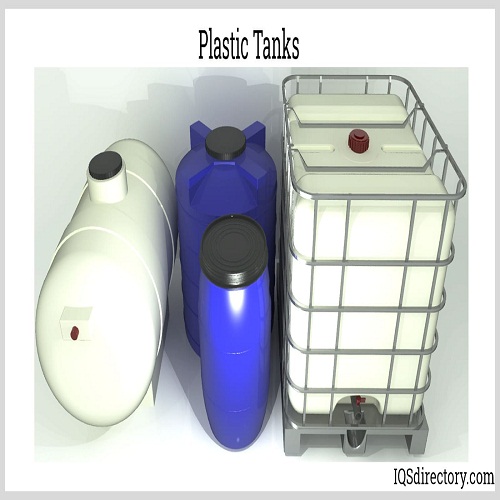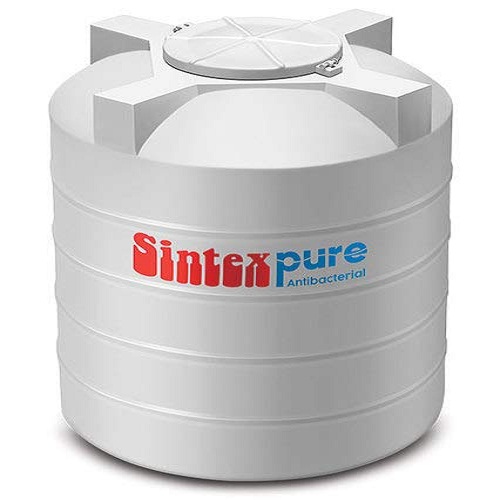
our category
PLASTIC TANKS
Plastic Tanks: Overview, Types, and Benefits
Plastic tanks are widely used for storing liquids and other substances due to their durability, cost-effectiveness, and versatility. These tanks are made from various types of plastics such as polyethylene (PE), polypropylene (PP), and fiberglass-reinforced plastic (FRP), each offering distinct advantages depending on the application. Plastic tanks are commonly used in residential, commercial, and industrial settings for a wide variety of purposes including water storage, chemical containment, agriculture, and waste management.
Enquire Now
Types of Plastic Tanks
-
Polyethylene (PE) Tanks: Polyethylene is the most commonly used material for manufacturing plastic tanks. These tanks are lightweight, resistant to corrosion, and highly durable. Polyethylene tanks are ideal for storing water, chemicals, and food-grade substances.
- High-Density Polyethylene (HDPE): Known for its strength and resistance to impact and chemicals, HDPE plastic tanks are often used in industrial applications, such as for storing acidic or alkaline chemicals.
- Linear Polyethylene (LDPE): A more flexible and cost-effective alternative to HDPE, LDPE tanks are used in agriculture and horticulture for liquid storage.
-
Polypropylene (PP) Tanks: Polypropylene is another durable plastic material that is used for tanks requiring a higher resistance to heat and chemicals. These tanks are commonly used in industries where materials like acids and alkalis need to be stored safely.
-
Fiberglass-Reinforced Plastic (FRP) Tanks: FRP tanks combine fiberglass with plastic, making them significantly stronger than polyethylene and polypropylene tanks. These tanks are known for their corrosion resistance, long lifespan, and ability to withstand high pressures, making them ideal for storing chemicals, petroleum products, and wastewater.
-
Polyvinyl Chloride (PVC) Tanks: PVC plastic tanks are a cost-effective solution used mainly in chemical processing and water treatment industries. They are lightweight, resistant to corrosion, and can be designed for both indoor and outdoor installations.
Benefits of Plastic Tanks
-
Durability: Plastic tanks are highly resistant to corrosion, rust, and chemical reactions, making them ideal for long-term use. Unlike metal tanks, plastic tanks do not suffer from deterioration due to exposure to water, chemicals, or environmental conditions.
-
Lightweight: One of the primary advantages of plastic tanks is their lightweight nature, which makes them easy to handle, install, and transport. This is especially important in applications where space is limited or installation is challenging.
-
Cost-Effective: Plastic tanks are generally more affordable than tanks made from materials like steel or fiberglass. This makes them an economical choice for both residential and commercial applications.
-
Flexibility and Customization: Plastic tanks can be molded into a variety of shapes and sizes to fit specific needs. They can be stacked, stackable, or even integrated into existing systems. Custom designs can accommodate different capacities, dimensions, and features such as manholes, venting, and outlet fittings.
-
Weather Resistance: Plastic tanks are highly resistant to UV rays, extreme temperatures, and weather conditions. This makes them suitable for outdoor installation without fear of degradation over time.
-
Non-Toxic and Safe: When manufactured from food-grade materials, plastic tanks can store drinking water, food products, and chemicals without risk of contamination. Tanks made from food-grade polyethylene are compliant with FDA and NSF standards.
Common Applications of Plastic Tanks
-
Water Storage: Plastic tanks are extensively used for storing drinking water, irrigation water, and rainwater harvesting systems. Their affordability, ease of installation, and ability to hold large volumes of liquid make them a preferred choice for homeowners, farmers, and municipalities.
-
Chemical Storage: Plastic tanks are ideal for storing various chemicals used in industries, agriculture, and laboratories. Their resistance to a wide range of chemicals ensures that hazardous materials can be stored safely without corrosion or contamination.
-
Wastewater Treatment: Many plastic tanks are used in septic systems, effluent treatment plants, and biogas systems for storing and treating wastewater. These tanks can safely contain waste before it's filtered, treated, or disposed of.
-
Fuel Storage: Plastic tanks, particularly those made of FRP and HDPE, are used to store diesel, petrol, and gasoline in agriculture, construction, and mining industries. They offer safety and compliance with environmental regulations.
-
Agriculture: Plastic tanks are essential in agriculture for the storage of fertilizers, pesticides, water, and irrigation systems. These tanks help improve water conservation and provide essential liquid nutrients for crops.
-
Aquarium and Fish Farming: For aquarium enthusiasts and aquaculture facilities, plastic tanks are used to store water for fish farming, coral reefs, and aquariums. Their ease of cleaning and ability to maintain water conditions makes them an ideal solution.
Choosing the Right Plastic Tank
When selecting a plastic tank for your needs, it's essential to consider the following factors:
-
Material: Determine the specific type of plastic based on the contents the tank will hold. If the tank is for chemicals, make sure it's made from HDPE or FRP to ensure chemical compatibility.
-
Capacity: Assess the storage requirements of your application. Plastic tanks come in various sizes ranging from small 200 liters to large 20,000+ liter capacity tanks.
-
Environmental Factors: Consider the installation environment. Some plastic tanks are specifically designed for indoor or outdoor use, while others are UV-resistant for prolonged exposure to sunlight.
-
Shape and Design: Ensure that the tank fits in the available space and meets the necessary design requirements. Tanks come in vertical, horizontal, and custom shapes.
-
Compliance and Certification: For applications involving food or drinking water, ensure the tank meets relevant certifications such as NSF, FDA, or WaterMark for water storage.
Maintenance of Plastic Tanks
Plastic tanks are generally low-maintenance, but they should still be inspected regularly to ensure proper functionality. Here are some maintenance tips:
- Clean Regularly: Clean tanks periodically to prevent build-up of dirt, debris, and algae. Use non-abrasive cleaning agents to avoid scratching the surface.
- Check for Leaks: Regularly check for leaks around fittings, valves, and joints. Replace damaged seals and fittings as needed.
- Inspect for UV Damage: Although plastic tanks are UV-resistant, prolonged exposure to sunlight can degrade certain materials. Consider applying a protective coating if necessary.
- Check for Cracks or Bulges: Inspect the tank for signs of physical damage such as cracks or bulges, especially after extreme weather conditions.
Conclusion
Plastic tanks provide reliable, affordable, and versatile solutions for a variety of liquid storage needs. Whether it's for water, chemicals, agriculture, or waste management, plastic tanks offer a high-performance alternative to other materials. Their durability, lightweight nature, and customization options make them an ideal choice for residential, commercial, and industrial applications. With proper care and regular maintenance, plastic tanks can last for many years while ensuring safe and efficient storage.


